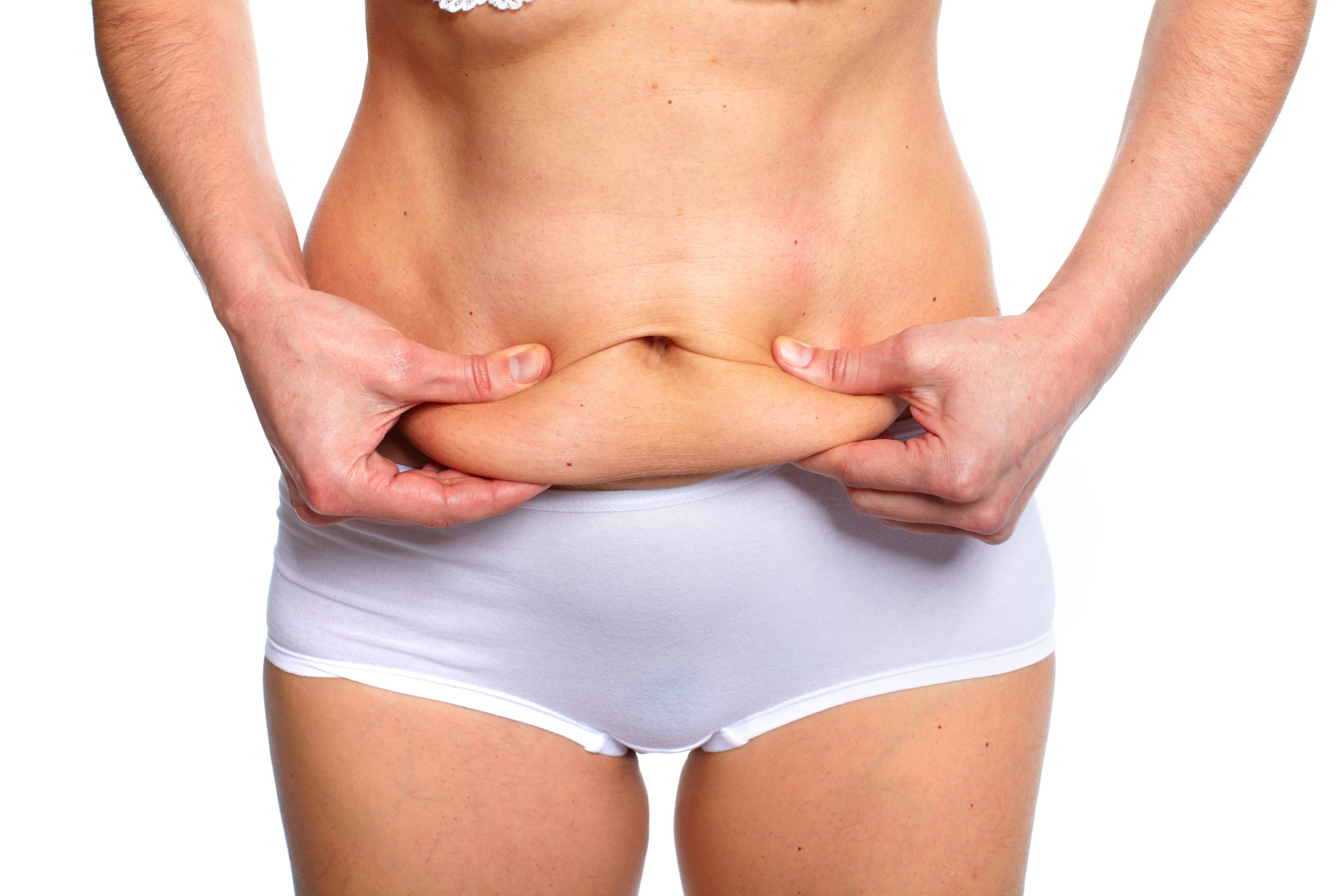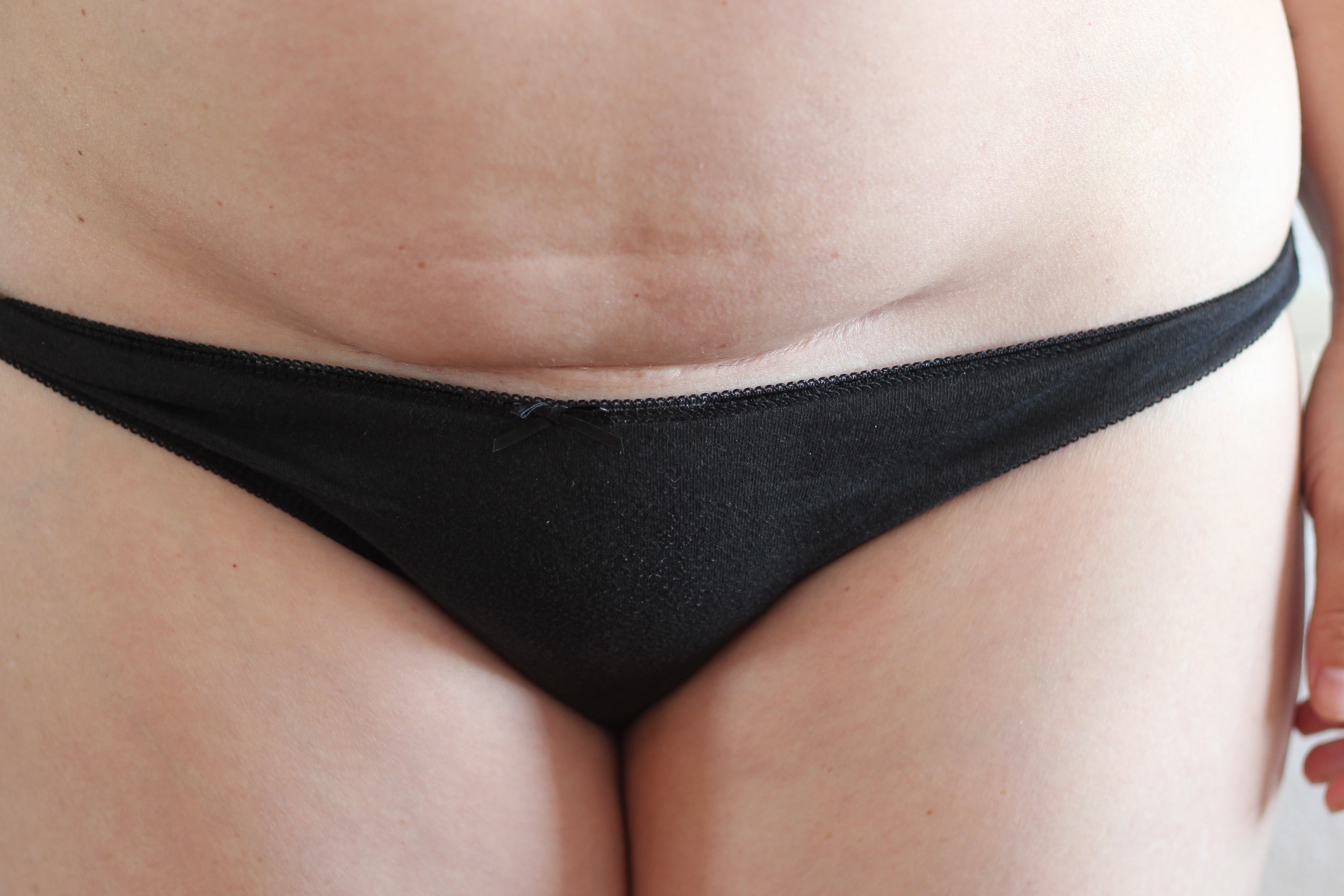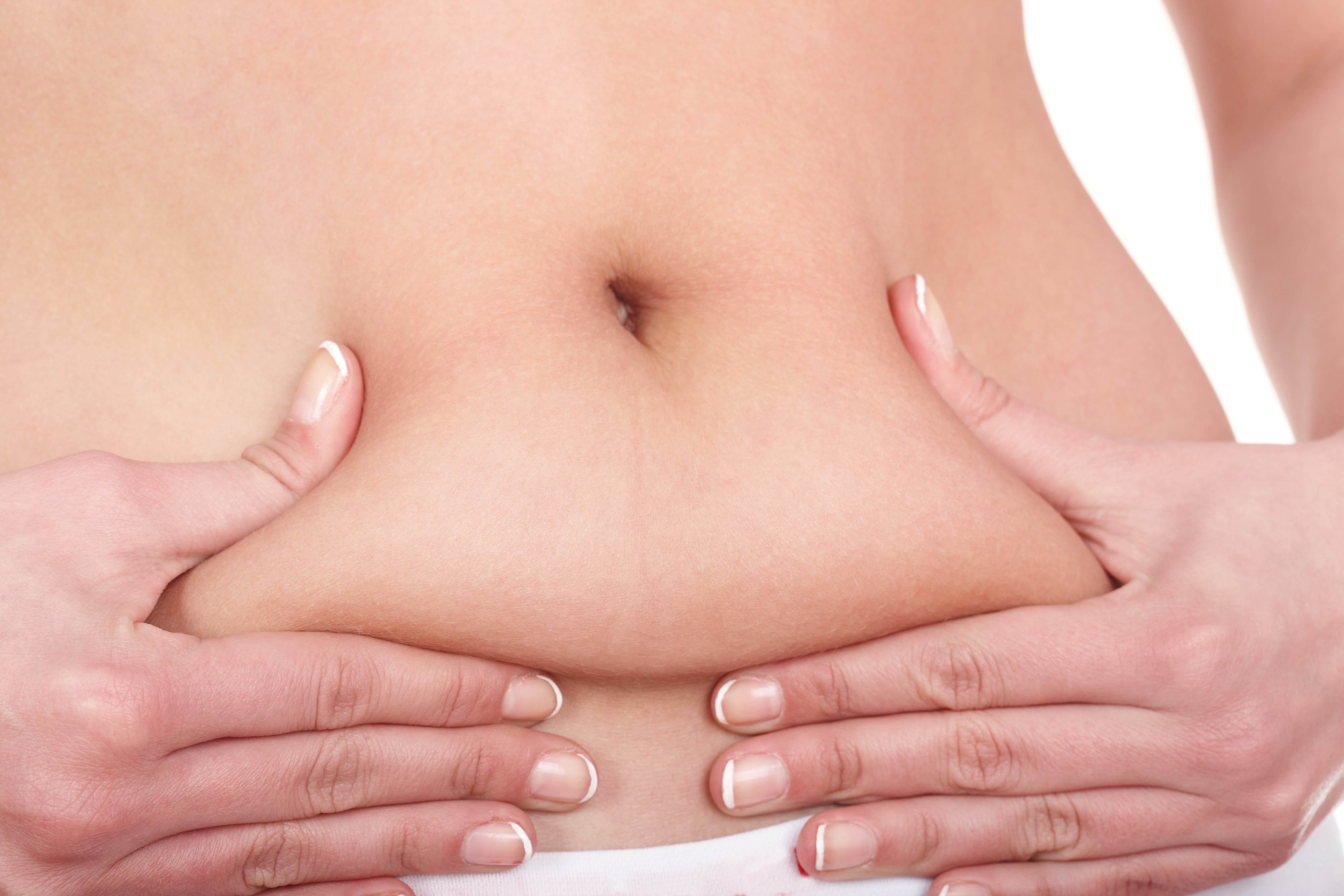


Many women suffer from a C-section shelf, which often occurs in the lower abdomen region after the procedure.
Even if you lose weight and exercise regularly, that excess tissue – commonly referred to as a “shelf” or “pooch” can still peek over your C-section scar.
We often advise an abdominoplasty, which targets the lower abdomen and removes excess fat. The three categories of C-section shelf are:
- Excess fat with loose skin (most common).
- Excess fat with good skin tone.
- Loose skin alone (least common.
Discover how each category impacts your treatment options and how Dr. Darren Smith approaches C-section pouch removal.
Treatment for the Three Types of C-Section Shelf
Excess Fat, Loose Skin
One of the most common findings of the “postpartum belly” is a C-section pouch, or shelf.caused by excess loose fat and skin that hangs over the scar from the C-section.
The procedures we might recommend to treat this kind of C-section pouch include:
Conservative Liposuction
If your C-section shelf is of mild to moderate severity and involves issues with both the skin and fat layers, we often begin with a conservative liposuction procedure, often done under local anesthesia with tiny incisions. Energy-based skin tightening in the form of BodyTite radiofrequency energy is often included as well (see below). This procedure effectively contours the lower abdomen and adds contouring to the abdominal muscles by removing excess fat.
BodyTite
We’ll usually recommend BodyTite procedures for mild to moderate skin laxity. The procedure uses radiofrequency (RF) energy to tighten loose skin without needing an abdominoplasty scar.
We use the same small incisions from liposuction to introduce the RF wand and tighten the skin by shrinking collagen and causing contraction. The result? Significant “shelf” reduction and around two days off work.
Mini Tummy Tuck
If you have severe skin laxity, we might recommend a “mini” tummy tuck.
The procedure involves removing excess skin and fat below the belly button, using the C-section scar tissue with slight extensions on either side.
Excess Fat, Good Skin Tone
Individuals with excess fat and good skin tone can benefit from liposuction alone. After we remove the fat with liposuction, the skin will contract on its own, improving muscle tone without excess skin hanging over the C-section scar.
These procedures usually only require local anesthesia, and they can dramatically improve your physical appearance, making them worthwhile for a lasting confidence boost.
Loose Skin Alone
So what happens when you lose excess weight but the skin lacks elasticity? These C-section pouches look like a skin roll on top of the scar. There are treatments available to target isolated skin laxity:
- Mild to Moderate Laxity: If the laxity isn’t severe, we often recommend BodyTite, which is minimally invasive and usually offers great results.
- Severe Laxity: If the laxity is severe, we might advise performing a mini-abdominoplasty using small extensions on either end of your C-section scar.
- Stretch Marks: Stretch marks are highly common after pregnancy. We often recommend Morpheus8, an advanced radiofrequency microneedling device that stimulates collagen production and improves skin tone and contour.
So, C-section shelves are extremely common and can be treated very effectively—usually with minimal downtime. The key to a great outcome is to diagnose the cause of the problem and address it directly.
What Causes A C-Section Shelf?
There are three leading causes of a C-section shelf:
- Pregnancy: When a baby exerts a downward force on the abdominal wall during pregnancy, a C-section shelf may result as the lax tissue hangs over the C-section scar. Other causes related to pregnancy include hormonal alterations and genetics.
- Weight Gain: Many women experience weight gain during pregnancy, but excessive gain can make the shelf appear more prominent as fatty tissue begins to develop. The pouch becomes more noticeable when this fat settles around the scar tissue.
- Hormones: Hormonal changes are normal during pregnancy, but high estrogen levels can weaken the connective tissues, leading to a C-section shelf.
Is A C-Section Shelf Painful?
Most people don’t experience pain with a C-section shelf, but it can cause some physical discomfort. Severe C-section shelves may be associated with skin rashes which can be quite uncomfortable.
Some women also experience itching, tingling, and numbness in deeper layers of connective tissue, but it depends on your unique symptoms.
Can Exercise and Diet Remove A C-Section Shelf?
Unfortunately, a surgical procedure or liposuction is the only proven way to completely remove a C-section shelf, but dieting and following an exercise routine can still be beneficial.
Pelvic floor exercises can strengthen the lower abdominal region, and core-strengthening workouts offer some benefits for separated abdominal muscles, which can exaggerate the appearance of the C-section shelf.
Even though a regular exercise routine won’t remove your pouch, it can help you lose weight and improve the results of your procedure.
Consume a nutrient-rich diet
Again, consuming a healthy diet won’t result in miracles, but certain foods contain high levels of protein and nutrients. Fruit, lean meats, vegetables, and bone broth can stimulate collagen production, which speeds up postpartum skin recovery.
Surgical Procedures To Get Rid Of A C-Section Shelf
While liposuction removes excess fat and is a go-to option for a C-section shelf, you might need a more comprehensive option to improve severe skin elasticity. We usually recommend some form of tummy tuck for patients in this situation. A mini tummy tuck is appropriate if the laxity is limited to the region below the umbilicus. If the entire abdomen is involved, a full abdominoplasty may be a better option.
Tummy Tucks for C-Section Shelf
A tummy tuck (or abdominoplasty) is a surgical procedure that effectively removes excess fat and skin. It’s one of the best ways to treat a C-section shelf and can also repair rectus diastasis (separated abdominal muscles).
Dr. Smith will remove excess fat and skin from the abdominal region during the procedure, creating a flatter look. Tummy tucks are one of the most powerful plastic surgery treatments, as they effectively address all treatable layers of the abdomen (muscle, fat, and skin).
Should I have a C-tuck?
Some surgeons recommend C-tucks, which are performed at the same time as C-sections. The main draw of these procedures is only having to complete one recovery period, but Dr.Smith strongly cautions against the practice for the following reasons:
- Abdominal Changes: The abdomen will continue to change for months after delivery or completing breastfeeding, so surgeons can’t guarantee optimal results. It’s hard to know how much skin and adipose tissue to remove, so it’s best to wait.
- Complications: Having a C-tuck can also cause more complications, including severe scar tissue adhesions. Dr.Smith advises waiting 3-6 months after delivery or the completion of breast feeding (when performed) for your tummy tuck procedure. He published his recommendations in the official journal of the American Society of Plastic Surgeons: Plastic and Reconstructive Surgery.
How Much Does A C-Section Shelf Removal Cost?
The costs associated with C-section shelf removal depend on your procedure and whether you’re combining it with additional treatment options. Dr. Smith treats each patient individually, assessing your unique needs before making his recommendations.
Your personalized treatment plan will include anesthesia, surgical, aftercare, and facility fees. When you receive treatment with Dr. Darren Smith, you have access to a top-rated clinic and highly experienced surgeon.
Patients can also take advantage of convenient financing options.
C-section FAQ’s
1. How to get rid of hanging belly after c–section years later?
A belly that is hanging over a C-section scar is usually composed of extra fat and loose skin. For more severe cases, an abdominoplasty (tummy tuck) is performed to remove the extra skin and fat. If the issue is only present below the belly button, a “mini” abdominoplasty with a smaller scar may be appropriate. If the entire abdomen is involved, a full abdominoplasty will likely be needed to address the issue. For less severe cases, a combination of liposuction to remove the fat and energy-based devices like VASER and BodyTite may be appropriate.
2.How long does it take for C-section pooch to go away?
This depends on the type of treatment. If removed with a tummy tuck, results are immediate. If liposuction and energy-based treatments are used, it can take a few months to see the final result.
3. Can you get rid of C-section pooch without surgery?
If diet and exercise are not doing the trick, a C-section pooch can be reduced with non-surgical treatments like Emsculpt Neo. Minimally invasive options include liposuction, VASER, and BodyTite can be helpful in properly selected patients.


